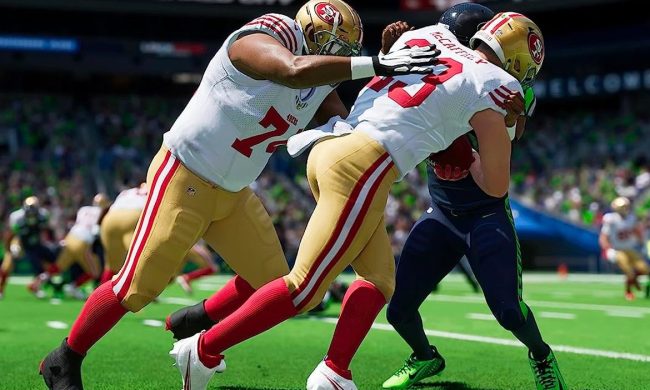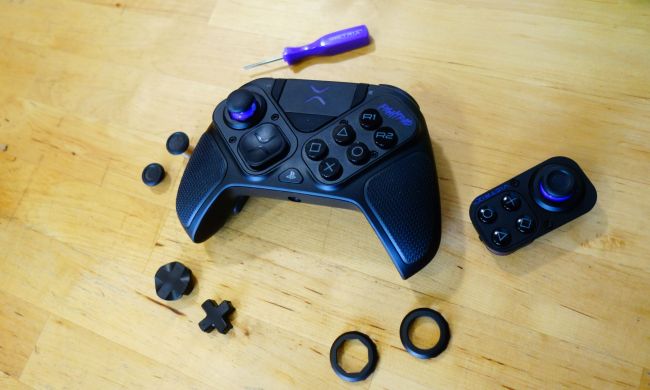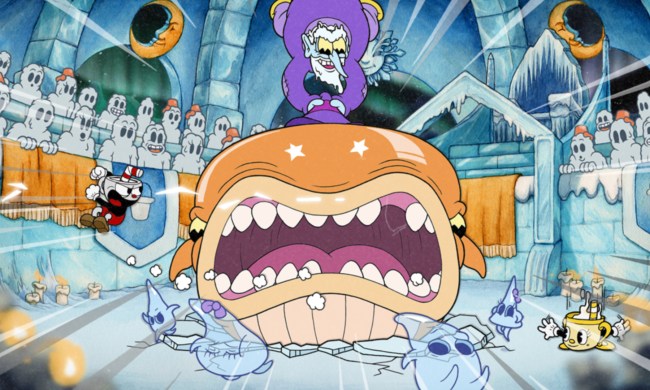With the NFL extending its exclusivity deal with Electronic Arts in the coming days, the Madden franchise will remain the only realistic football game in town. But by the time this contract comes to an end, so too might EA’s 20-plus-year winning streak.
The league and the publisher have struck an agreement that will make EA the sole creator of NFL simulation games on PC and consoles through at least the 2025 season. That announcement, in and of itself, isn’t especially surprising. EA telegraphed it months ago. But the news in March that 2K Sports would create a line of “non-simulation” games for the next several years raised a lot of eyebrows. And it could be the runway the NFL needs to end EA’s exclusivity later this decade.
This saga got its start back in 2004. Take-Two’s NFL 2K5 not only got strong reviews that year, but it also forced EA into a price war, with 2K Sports dropping the cost of its game to $20 to lure in players. Fearing for its golden goose, EA struck a deal with the NFL that effectively shut down Take-Two’s efforts before that publisher could reach the goal line.
A lot has changed in the years since, though.
NFL television ratings have slid precipitously and the league has been dogged with controversies ranging from Colin Kaepernick and players kneeling during the national anthem to New England Patriots owner Robert Kraft being caught up in a day spa sex-for-pay probe. Video games bring some money into the league’s coffers, but that’s chump change compared to the billions of dollars earned from merchandise sales and television deals. Video games, however, do provide great exposure.
Madden, without question, gives the NFL that exposure. It is an event game release that players look forward to each year. Last year’s version sold roughly 6 million copies, according to Wedbush analyst Michael Pachter.
That’s good, but it’s far short of the 10 million to 12 million copies of NBA 2K games that were sold and the 20 million copies of FIFA soccer games. That raises the question, he says, of why Madden isn’t pulling in those sorts of numbers.
That could be because equating the three sports is an apples and oranges comparison, argues P.J. McNealy, CEO of Digital World Research. Soccer is a global phenomenon and the NBA “travels well as a brand. There’s the Olympic exposure, going back to the Dream Team. And there are no global icons like Michael Jordan in the NFL.”
The NFL, of course, might not see things that way, especially given its efforts to extend its audience with games in the United Kingdom, Mexico, and other countries.
That could be 2K’s opportunity.
“There’s something to be said for making a great game and marketing it well and Take-Two has done a great job at that,” says Pachter. “Their last NFL game was in 2005, though, which is one of the reasons 2K is doing this NFL lifestyle game, I think. My guess is Take-Two is using this as a proof of concept so they can be in the next [contract negotiation] round.”
There’s certainly precedent for splitting the league among competing companies in the same industry. Look no further than the NFL’s multiple agreements with the four major television networks for proof.
Additionally, in 2004. EA could easily outspend Take-Two. Today, the company behind 2K Sports has about $2 billion in cash in its reserves. (That’s still less than EA, but it’s enough to put in a competitive bid.)
Cash and visibility will likely be the deciding factors whenever the discussion comes up once again on whether to renew EA’s exclusive license for an NFL simulation. But you can’t rule out the relationship between the two organizations (three, if you count the NFL Player’s Association) entirely. EA and the NFL have been good partners to each other for nearly two decades — and that carries some weight.
“EA has certainly invested more money and energy in the research and development of this franchise and this sport than any other company globally,” says McNealy. “They have a relationship with the league for a product that the players now wholeheartedly embrace. They’ve managed to get incredibly close to the players in the NFL over the past five years. You see it when the hair goes up on some of the players’ backs by how they look in their uniform or what their Madden score is. You didn’t hear about that 10 years ago, but you certainly hear about it now.”



